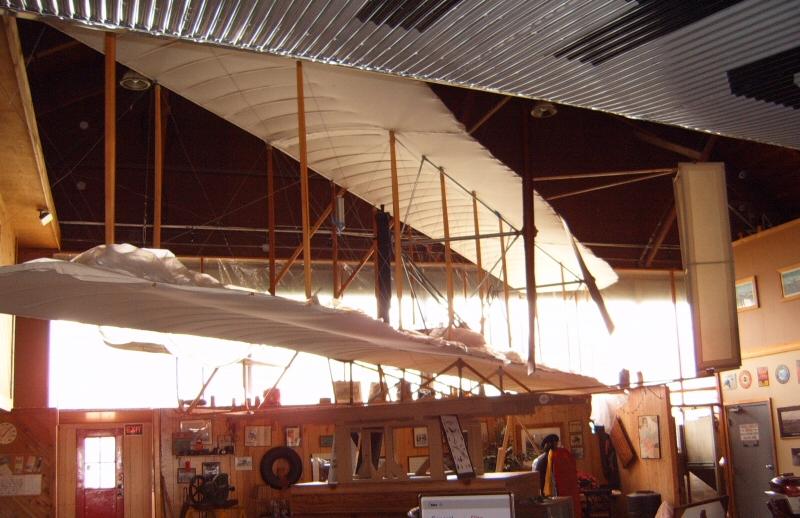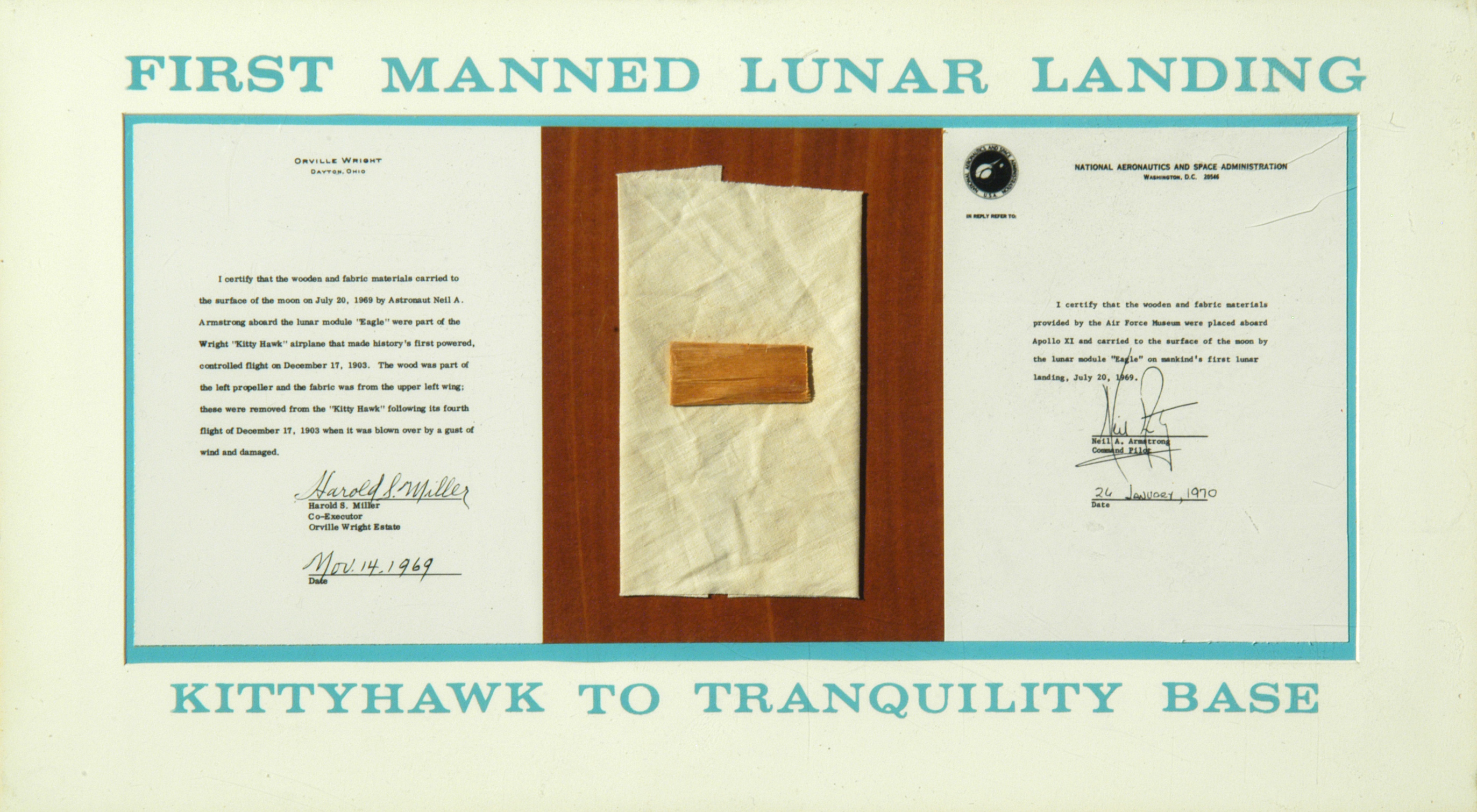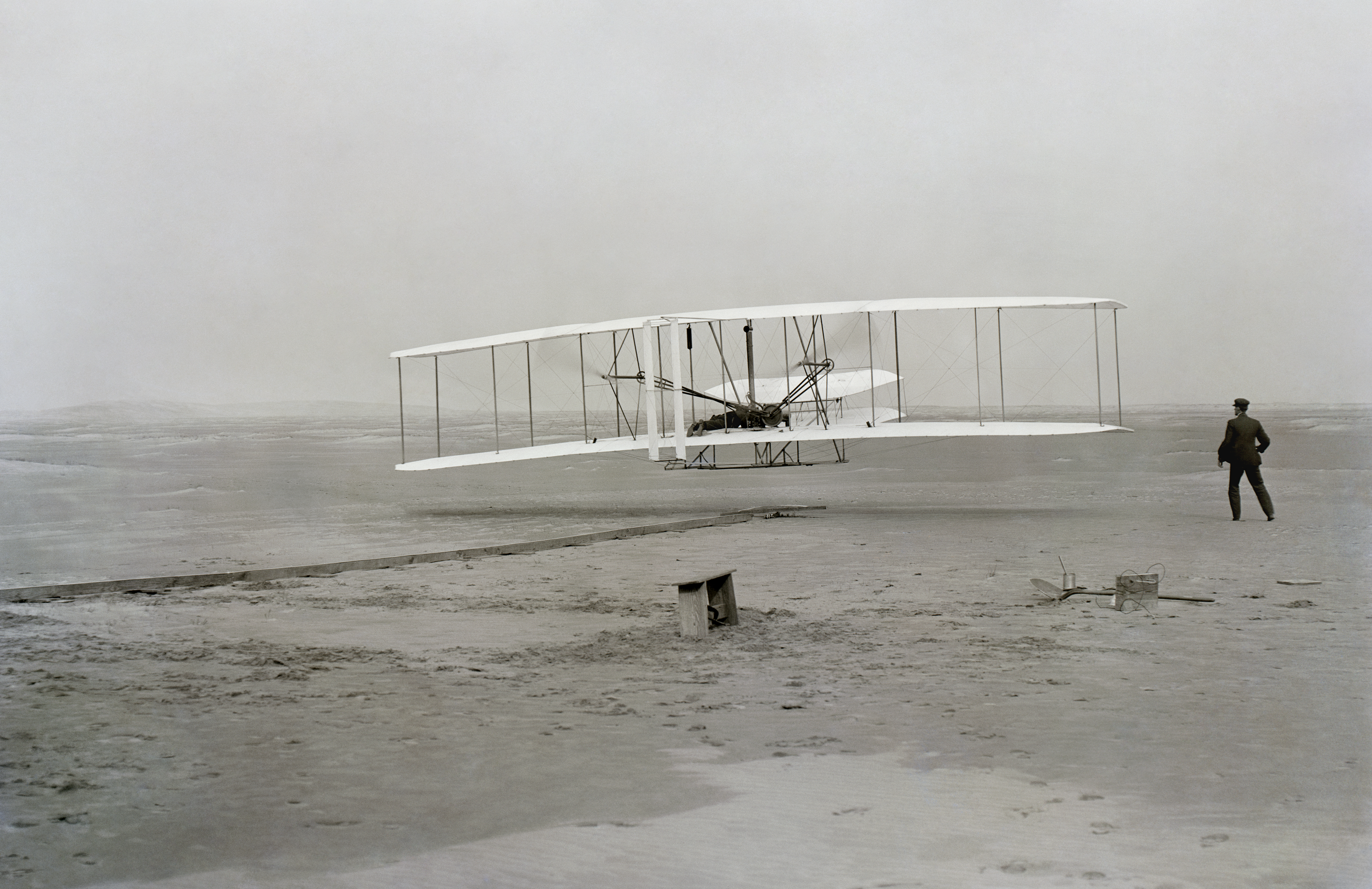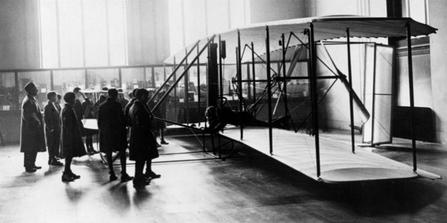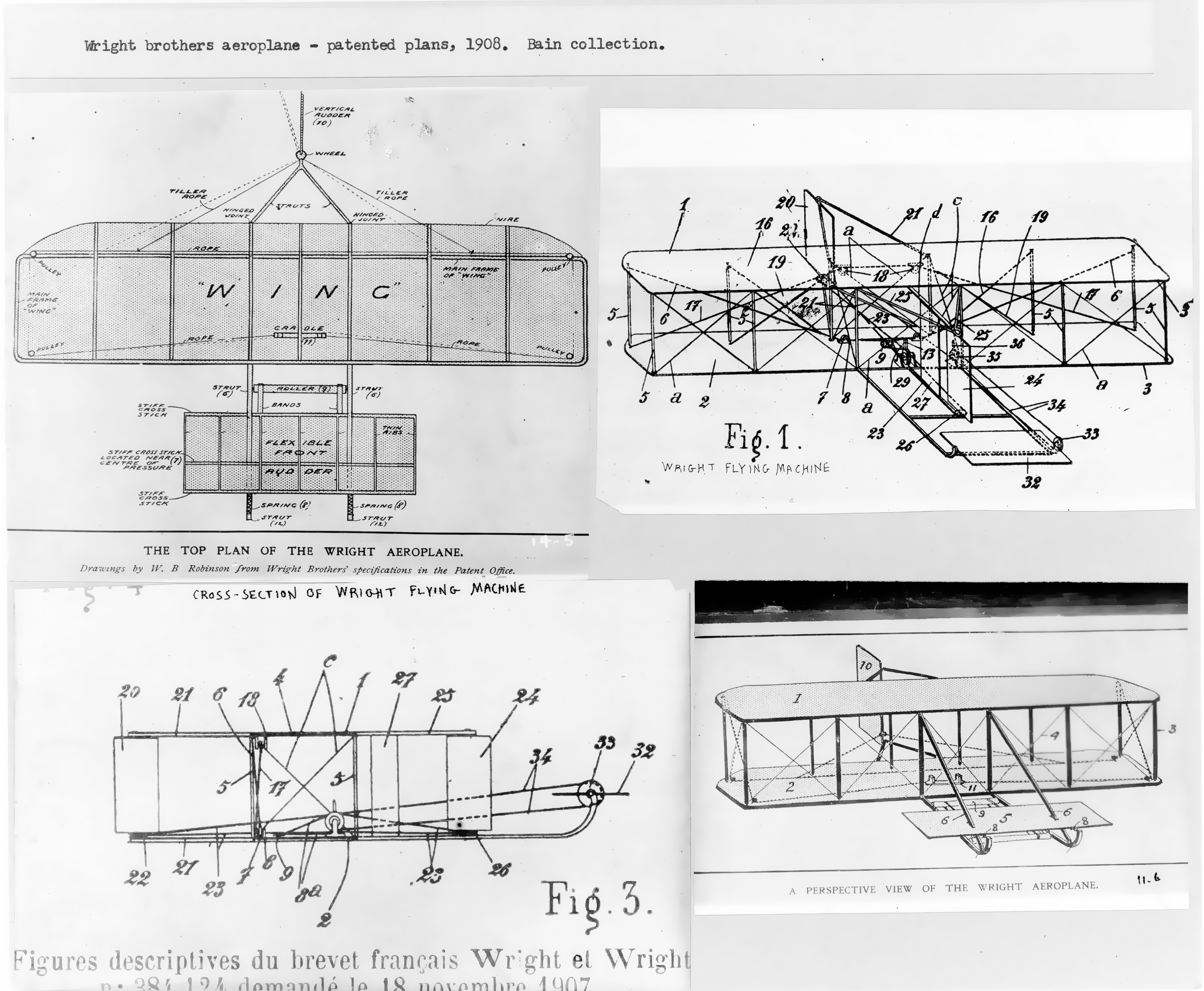Wright Flyer (Airplane)
Enlarge text Shrink text- Work cat.: The Wright Flyer : an engineering perspective, 1985
The Wright Flyer (also known as the Kitty Hawk, Flyer I or the 1903 Flyer) made the first sustained flight by a manned heavier-than-air powered and controlled aircraft on December 17, 1903. Invented and flown by brothers Orville and Wilbur Wright, it marked the beginning of the pioneer era of aviation. The aircraft is a single-place biplane design with anhedral (drooping) wings, front double elevator (a canard) and rear double rudder. It used a 12 horsepower (9 kilowatts) gasoline engine powering two pusher propellers. Employing "wing warping", it was relatively unstable and very difficult to fly. The Wright brothers flew it four times in a location now part of the town of Kill Devil Hills, about 4 miles (6 kilometers) south of Kitty Hawk, North Carolina. The airplane flew 852 ft (260 m) on its fourth and final flight, but was damaged on landing, and wrecked minutes later when powerful gusts blew it over. The aircraft never flew again but was shipped home and subsequently restored by Orville. The aircraft was initially displayed in a place of honor at the London Science Museum until 1948 when the resolution of an acrimonious priority dispute finally allowed it to be displayed in the Smithsonian. It is now exhibited in the National Air and Space Museum in Washington, D.C.
Read more on Wikipedia >
 Topic
Topic




